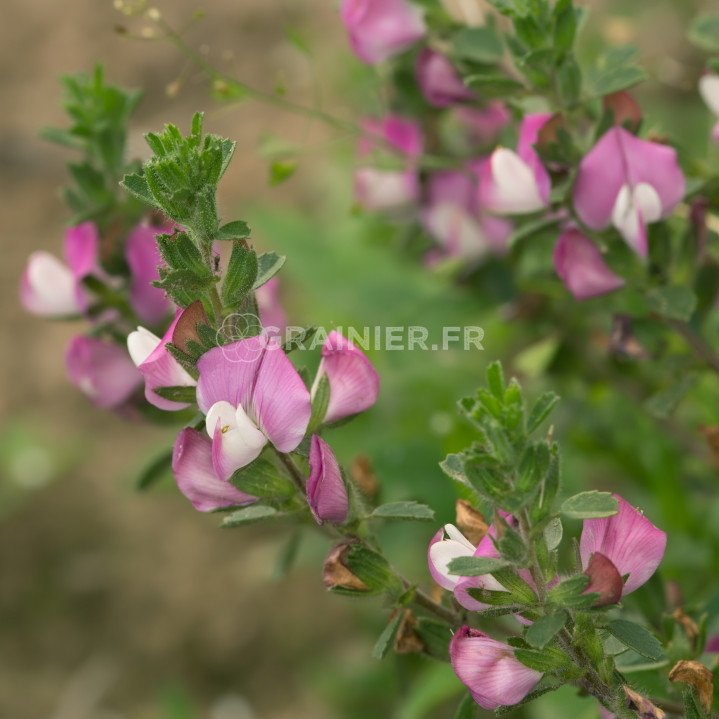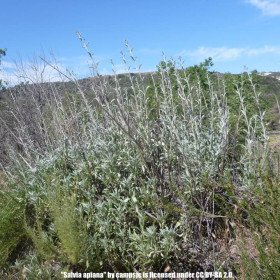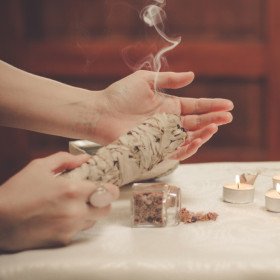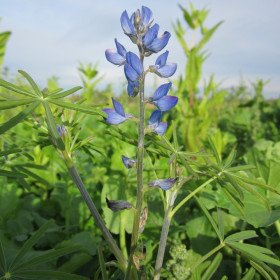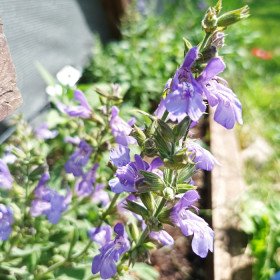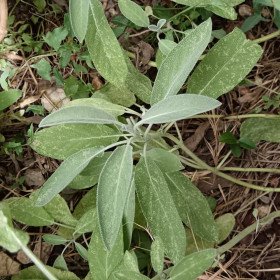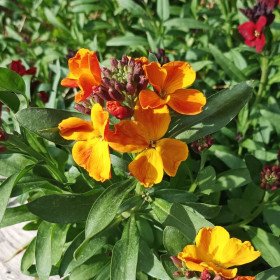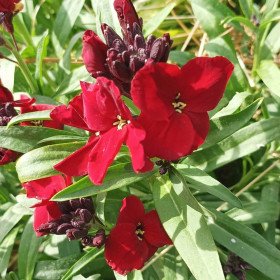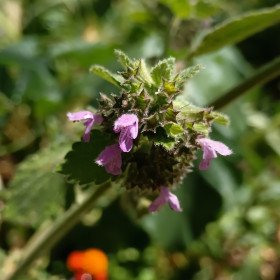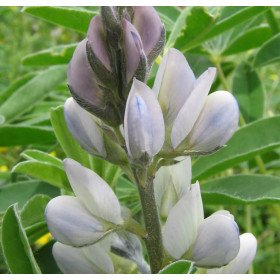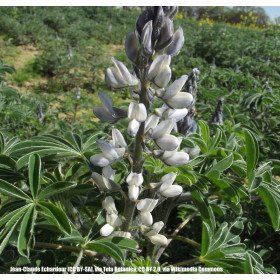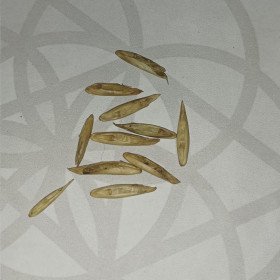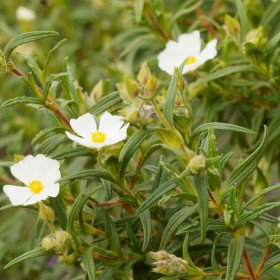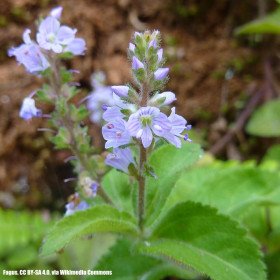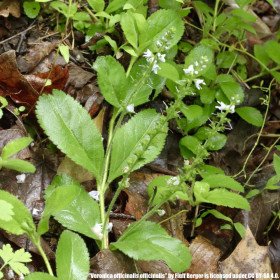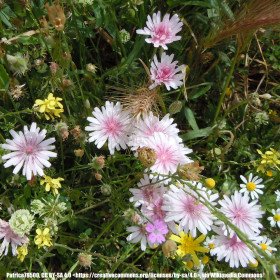10 Graines Bugrane épineuse, arrête de boeuf, Ononis spinosa
10 Graines Bugrane épineuse, arrête de boeuf, Ononis spinosa
- Modèle : 10 Graines Bugrane épineuse, arrête de boeuf, Ononis spinosa
- Disponibilité : 5
- 1,50€
Bugrane épineuse, arrête de boeuf, Ononis spinosa |
Découvrez la Bugrane épineuse, une plante vivace fascinante aussi connue sous le nom d'Arrête-bœuf. Nos graines d'Ononis spinosa vous permettront de cultiver cette espèce rustique, aux propriétés médicinales reconnues et appréciée des pollinisateurs.
10 graines
Graines de Bugrane épineuse (Ononis spinosa) - Plante médicinale rustique et mellifère
Caractéristiques principales :
- Nom scientifique : Ononis spinosa
- Noms communs : Bugrane épineuse, Arrête-bœuf, Bougrane
- Famille : Fabaceae (Légumineuses)
- Origine : Europe, Asie occidentale, Afrique du Nord
- Type de plante : Vivace herbacée à semi-ligneuse
- Hauteur à maturité : 30-60 cm
- Largeur à maturité : 30-50 cm
- Floraison : Été (juin à septembre)
- Couleur des fleurs : Rose à pourpre
- Feuillage : Caduc, vert foncé
- Exposition : Plein soleil
- Rusticité : Très rustique, supporte jusqu'à -20°C
Description détaillée : L'Ononis spinosa, ou Bugrane épineuse, est une plante vivace fascinante qui allie robustesse et élégance. Reconnaissable à ses tiges ligneuses munies d'épines et à ses jolies fleurs roses rappelant celles des pois, cette espèce indigène d'Europe est un véritable atout pour les jardins naturels et les prairies fleuries.
La Bugrane épineuse tire son nom commun "Arrête-bœuf" de sa capacité à stopper les bœufs lors du labour, grâce à ses racines profondes et ses tiges épineuses. Cette caractéristique en fait une excellente plante pour stabiliser les sols et lutter contre l'érosion.
Plante mellifère par excellence, l'Ononis spinosa attire une multitude d'insectes pollinisateurs, notamment les abeilles et les papillons, contribuant ainsi à la biodiversité de votre jardin. De plus, en tant que légumineuse, elle a la capacité de fixer l'azote atmosphérique, enrichissant naturellement le sol.
Reconnue pour ses propriétés médicinales, la Bugrane épineuse est traditionnellement utilisée en phytothérapie pour ses vertus diurétiques et anti-inflammatoires. Ses racines sont particulièrement appréciées en herboristerie.
Instructions de culture :
- Semez les graines directement en place au printemps ou à l'automne.
- Choisissez un emplacement ensoleillé dans un sol bien drainé.
- Scarifiez légèrement les graines avant le semis pour favoriser la germination.
- Semez en surface ou enfouissez très légèrement les graines.
- Maintenez le sol humide jusqu'à la germination, qui peut prendre 2 à 4 semaines.
- Éclaircissez les plants en les espaçant de 30 à 40 cm.
Conseils d'entretien :
- Arrosez modérément, la Bugrane épineuse tolère bien la sécheresse une fois établie.
- Aucune fertilisation n'est nécessaire, la plante préfère les sols pauvres.
- Taillez légèrement au printemps pour stimuler une nouvelle croissance si désiré.
- Attention aux épines lors de la manipulation de la plante.
Utilisations au jardin :
- Idéale pour les prairies fleuries et les jardins naturels
- Parfaite pour les sols pauvres et caillouteux
- Excellente pour la stabilisation des pentes et la lutte contre l'érosion
- Intéressante dans les jardins de plantes médicinales
- Peut être utilisée en association avec d'autres fleurs sauvages pour créer des massifs naturels
L'Ononis spinosa est un choix judicieux pour les jardiniers recherchant des plantes indigènes, rustiques et bénéfiques pour l'environnement. Sa floraison estivale prolongée, son attrait pour les pollinisateurs et ses propriétés médicinales en font une addition précieuse à tout jardin écologique. En choisissant nos graines de Bugrane épineuse, vous contribuez à la préservation de la biodiversité tout en ajoutant une touche d'authenticité à votre espace vert.
Etiquettes : bugrane, epineuse, arrete, boeuf, ononis, spinosa, Aromatiques & médicinales Bugrane épineuse, arrête de boeuf, Ononis spinosa, Fleurs & Herbes ornementales Bugrane épineuse, arrête de boeuf, Ononis spinosa, GRAINES POTAGÈRES & AROMATIQUES Bugrane épineuse, arrête de boeuf, Ononis spinosa, Bugrane épineuse, arrête de boeuf, Ononis spinosa Aromatiques & médicinales, Bugrane épineuse, arrête de boeuf, Ononis spinosa Fleurs & Herbes ornementales, Bugrane épineuse, arrête de boeuf, Ononis spinosa GRAINES POTAGÈRES & AROMATIQUES

